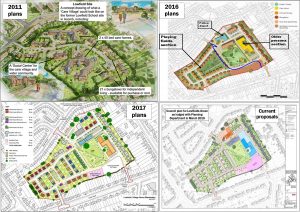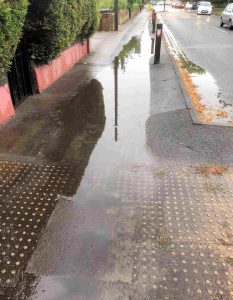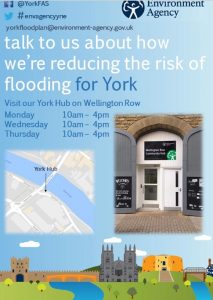
The area to be built on has increased – and open space provision reduced – every time a new plan has been drawn up by officials
The Save Lowfields Playing Field Action Group have written to the Government Minister with responsibility for Planning asking him to “call in” the planning application to develop the sports field at Lowfields.
The proposal was approved by the Council’s Executive in July and two formal applications were debated by the same authorities planning committee last week. Two Councillors serve on both committees. They have been criticised for not declaring their interest.
There are procedures in place which seek to ensure that a Council is not judge and jury on planning applications for land that it owns. For many years there was a protocol in place which discouraged Councillors from taking places on both the Executive committee and the Planning committee. That safeguard seems to have been abandoned by the current administration.
What will come of this remains to be seen but is the latest in a series of controversial moves by the Council over this land.
A scheme for a care village gained widespread approval when it was tabled early in 2011. But the Council failed to implement the plan and the former school site lay abandoned for 7 years. The expectation had been that only the “built footprint” of the school would be developed, but this changed when the then Tory leader of the Council, David Carr, appointed a “no win no fee” consultant to push through a large-scale redevelopment.
The consultant was only paid if he achieved milestones with his final payment depending on the planning application being successful. The large payments potentially involved were revealed in a response to a Freedom of Information request (ref: FT/5995) in February 2017. .
David Carr is also a member of the Planning Committee. He also did not declare an interest at last weeks meeting
Consultation results were manipulated by officials eager to demonstrate that the local community was in favour of the plans. This was done by lobbying supporters of one element of the scheme (communal housing). They were encouraged to back the scheme by visiting the Acomb Library and filling in comment forms or by doing so on line.
The Council didn’t ask residents which parts of the scheme they favoured and which they opposed.
A door to door survey by local Councillors revealed that residents supported the plans for the east of the site but wished to retain the sports pitch.
Residents cried “foul” when the Council wrote to local people to lobby for support within hours of submitting two planning applications in October 2017.
The Lowfields Residents Group submitted representations to the Planning Committee pointing to 11 reasons why outline planning permission for the development should not be granted.
None of the issues were addressed by Councillors or officials at the meeting.
One angry resident walked out of the planning meeting calling it “shameful”.
A video of the meeting can be viewed on You Tube via this link


 Separately the meeting will consider an
Separately the meeting will consider an